Families often wonder, “Will assisted living take my house?” This concern is common, as financial implications can be challenging. Generally, Medicaid allows seniors to keep their primary residence, but nuances exist, especially regarding asset transfer and the five-year lookback period. Understanding these factors is essential for safeguarding assets while planning for future care. Exploring funding options and local programs can provide additional security, prompting families to reflect on their approach carefully. What strategies can best protect their loved ones’ interests?
Key Takeaways
- Assisted living facilities typically do not take ownership of your house unless you sell it to pay for care costs.
- Medicaid may require asset liquidation or a lien on your home if you qualify for assistance, depending on state rules.
- Your primary residence is often exempt from Medicaid asset calculations, allowing you to retain it while receiving care.
- Planning ahead with financial options, like home equity, can help cover assisted living costs without losing your home.
- Consultation with a financial advisor can clarify how assisted living might impact your housing situation and estate planning.
Understanding Ownership Structures in Assisted Living

Understanding the ownership structures of assisted living facilities is essential for discerning how these environments operate and serve their residents. Various ownership types, including for-profit corporations, individuals, and nonprofit organizations, influence the services provided.
Transparency in ownership is critical; public databases should reveal key stakeholders and ownership stakes, fostering accountability. Management models also play a significant role, with options such as fee management and NNN leases impacting operational efficiency and financial responsibilities.
Fee management allows owners to control profits while NNN leases limit their exposure to operational risks. Recognizing these dynamics helps families understand how facilities prioritize resident needs and maintain continuity of care, ultimately shaping the overall quality of life for those residing within these communities.
The Importance of Facility Agreements
Facility agreements play a pivotal role in establishing the rights and responsibilities of both residents and operators within assisted living communities, guaranteeing a clear understanding of the services provided and the expectations set forth.
These contracts serve as a foundation for contract clarity, detailing ownership structures, operator licensing, and community classifications, which are essential for informed decision-making. They outline financial obligations, including basic fees and optional services, while also specifying the amenities and unit specifications available.
Additionally, agreements address critical issues such as medication management protocols and termination rights, reinforcing compliance with established regulations. By carefully reviewing facility agreements, families can guarantee their loved ones receive the appropriate care and support needed within a nurturing environment.
Medicaid Eligibility: What You Need to Know

How can individuals navigate the complexities of Medicaid eligibility as they seek assisted living options? Understanding Medicaid benefits is vital, as eligibility criteria are stringent.
For single seniors aged 65 and older, income must not exceed $2,901 monthly, while couples have specific allowances based on state formulas. Additionally, assets must align with limits, meaning primary residences can often remain exempt under certain conditions.
Applicants typically require assistance with four or more activities of daily living (ADLs) to qualify for long-term care, and states conduct thorough evaluations to confirm this need.
Awareness of Medicaid’s five-year lookback period and potential penalties for asset transfers is also essential, as proactive planning can greatly impact eligibility and preserve family assets during the process.
Financial Obligations in Assisted Living
Steering through the financial obligations associated with assisted living can be challenging for many families, particularly as costs can greatly vary based on location and care requirements. Monthly fees typically range from $3,000 to $6,000, and specialized care can further increase expenses.
Families should engage in financial planning to explore various funding options, including private pay, long-term care insurance, and veterans’ benefits. Asset restructuring and utilizing home equity solutions, such as reverse mortgages, can also provide necessary funds.
Additionally, families may consider state-specific programs or non-profit assistance to alleviate financial burdens. Understanding these options is essential for families to guarantee their loved ones receive the care they need without jeopardizing their financial stability.
Protecting Resident Rights and Legal Protections

Understanding the financial obligations of assisted living is only one aspect of the care landscape; residents also have rights that must be upheld to guarantee their dignity and autonomy.
Legal safeguards guarantee that residents retain control over their care plans, allowing them to make crucial decisions about their treatment and daily life. They are empowered to refuse interventions, discharge at their discretion, and access information about their care.
Advocacy is supported through access to long-term care ombudsmen and legal representatives, guaranteeing that residents can voice their concerns without fear of retaliation.
Additionally, strict protections against exploitation and abuse uphold the values of dignity and self-determination, fostering an environment where resident autonomy is respected and cherished.
The Impact of Change in Ownership
While changes in ownership of assisted living facilities can occur for various reasons, the implications of such shifts are significant for residents and their families. Understanding the ownership trends and change impacts is essential in managing these changes effectively.
- Ownership changes can affect care quality, even if no immediate decline is observed.
- Emergency department visits may increase temporarily following a change.
- Facilities with lower staffing ratings are more likely to experience ownership shifts.
- Urban areas face heightened risks, impacting resources and care delivery.
Families should be aware of these dynamics to guarantee their loved ones continue to receive the care they deserve during times of change.
Keeping informed can help in advocating for the best possible outcomes for residents.
Asset Protection Strategies for Families

Steering asset protection strategies is essential for families looking to safeguard their financial well-being in the face of potential long-term care needs.
Implementing legal structures, such as irrevocable asset protection trusts and family limited partnerships, allows for effective asset segregation, guaranteeing families can manage resources while minimizing tax liabilities.
Early transfers to children or grandchildren can reduce countable assets, while Medicaid-specific exemptions enable couples to preserve their wealth.
Additionally, timely financial foresight, including the use of Medicaid-qualified annuities and strategic gifting, can further protect assets.
The Role of Transparency in Assisted Living
Transparency plays an essential role in the landscape of assisted living facilities (ALFs), as it establishes a foundation of trust between residents, families, and caregivers. While transparency benefits include enhanced communication and informed decision-making, disclosure challenges often arise due to varying state regulations and privacy laws.
- State-specific transparency laws can lead to improved resident safeguards.
- The COVID-19 pandemic highlighted the need for clear disclosure regarding health and safety.
- Balancing resident privacy with necessary information for families remains a complex issue.
- Regular updates on care plans and services foster a sense of community and confidence.
In this evolving environment, the commitment to transparency is vital for ensuring that families feel secure in their choices regarding assisted living.
Navigating Payment Policies and Fees

How can families effectively navigate the often complex payment policies and fees associated with assisted living facilities?
Understanding various payment structures is vital. Facilities may offer a la carte pricing, allowing families to pay only for specific services, or all-inclusive pricing, which simplifies budgeting by covering housing and basic care.
Understanding payment structures is crucial, whether choosing a la carte services or all-inclusive pricing for easier budgeting.
Fee transparency is essential; families should inquire about move-in fees, ancillary service charges, and tiered care levels that may impact monthly costs.
Additionally, families should consider funding options, such as personal savings or available benefits like Medicaid.
Preparing for Future Care Needs
As the population ages and the demand for assisted living facilities continues to rise, families must proactively prepare for future care needs to guarantee their loved ones receive appropriate support.
Effective planning strategies can alleviate stress and make certain that individuals receive the necessary care. Families should consider:
- Evaluating current health and mobility needs to determine care levels.
- Researching local assisted living facilities and their services.
- Exploring financial options, such as long-term care insurance and Medicaid eligibility.
- Engaging in open conversations with loved ones about preferences and expectations.
Bottom Line
Ultimately, understanding the complexities of assisted living and its financial implications is essential for families. By steering through ownership structures, Medicaid eligibility, and potential asset protection strategies, families can guarantee that their loved ones receive the necessary care without losing their homes. Transparency and careful planning can facilitate a smoother shift into assisted living, ultimately fostering a supportive environment that prioritizes the well-being of seniors while safeguarding family assets for the future.




